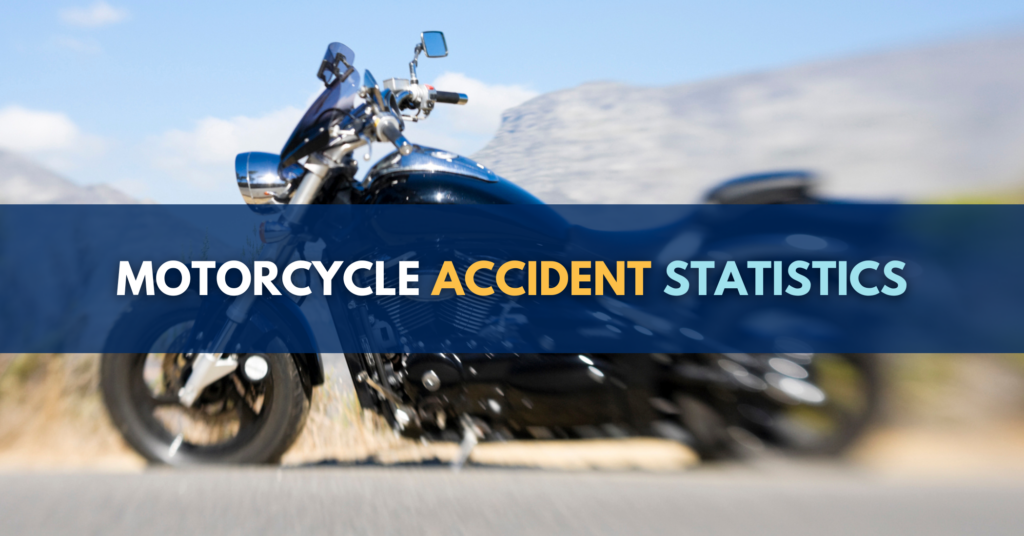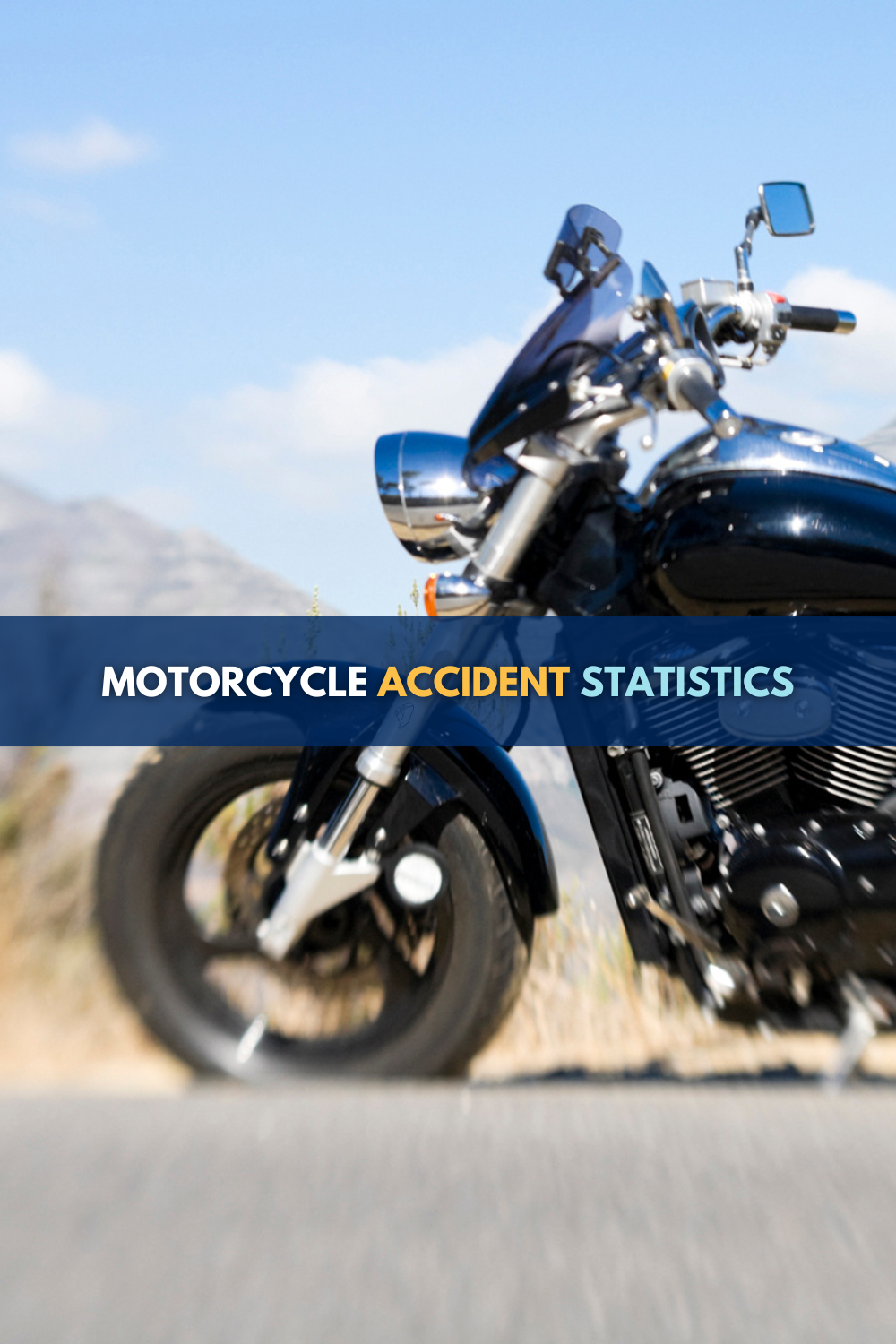Motorcycle Accident Statistics: What You Need To Know

Motorcycle accident statistics show that motorcyclists are 28 times more likely than people in passenger cars to die in a traffic crash. It also shows that most crashes involve a collision between a motorcyclist and another vehicle, especially one that turns left in front of the motorcyclist as it is traveling straight.
The motorcycle accident statistics discussed below are based on the most current years for which national and Michigan automobile crash data are available from NHTSA and from Michigan.
What do the motorcycle accident statistics tell us about the danger that motorcyclists face?
In 2018 and 2017, respectively, motorcyclists were 28 and 27 times more likely than passenger vehicle occupants to be killed in motor vehicle traffic crashes based on vehicle miles traveled, according to NHTSA.
What percentage of motorcycle riders get in accidents?
According to the motorcycle accident statistics, approximately 1% of motorcycle riders get into automobile crashes. Nationally, in 2017, there were 8,715,204 motorcycle registrations and there 94,172 motorcyclists that were killed or injured in crashes.
In Michigan in 2019, there were 251,048 motorcycle registrations and 2,809 motorcyclists were involved in crashes.
Of the 5,172 motorcyclists nationwide who were killed in 2017, 4,885 were riders or operators of the motorcycle and 287 were passengers.
How many motorcycle accidents are there per year?
In 2017, there were a total of approximately 94,172 fatal and injury-related motorcycle accidents nationally in 2017. In Michigan in 2019, there were a total of 2,809 motorcycle accidents, which included 120 fatal motorcyclist crashes and 2,047 injury crashes.
What is the major cause of death in motorcycle accidents?
According to the motorcycle accident statistics, the major cause of death is when a motorcyclist collides with another vehicle. In 2017, nationwide, 57% of the motorcyclists involved in fatal crashes were due to colliding with another vehicle.
Below are the other major causes of death:
- Going straight ahead: Nationally, 42% of all two-vehicle fatal crashes in 2017 involving a motorcyclist and another vehicle involved the other vehicle turning left in front of a motorcyclist as it traveled in a straight, forward direction. In Michigan in 2019, 67% of all motorcyclists involved in fatal crashes involved the motorcycle rider was “going straight ahead” just before the crash.
- Speeding: 32% of the motorcyclists who were involved in fatal crashes nationally in 2017 were speeding.
- Drinking and driving: 28% of the motorcyclists who were killed in fatal motor vehicle traffic crashes nationwide in 2017 were alcohol-impaired with BAC levels of .08 g/dL or higher. Of the 122 motorcyclists killed in Michigan in 2019, 29.5% of those deaths were caused by a “had-been-drinking crash.”
What is the main cause of a crash with a motorcyclist?
The main cause of these crashes is being struck by or colliding with another type of vehicle, which frequently occurs while a motorcyclist is going straight ahead on the roadway and the other vehicle turns left in front of the motorcyclist.
According to the motorcycle accident statistics other causes of include:
- Head-on collisions: 76% of the motorcyclists involved in two-vehicle motor vehicle traffic crashes nationally were struck head-on.
- Slowing or stopping: In 6% of the crashes involving motorcyclists in Michigan in 2019, the motorcyclist was “slowing” or “stopping in the roadway” just before the crash.
- Curves in the road: In just less than 5% of the crashes involving motorcyclists in Michigan in 2019, the motorcyclist was “negotiating a curve” just before the crash.
- Turning left: In approximately 4% of the crashes involving motorcyclists in Michigan in 2019, the motorcyclist was “turning left” just before the crash.
What percentage of motorcycle accidents are fatal?
Nationwide, fatal motorcycle accidents, which includes both riders and passengers, accounted for 14% of all traffic fatalities in 2017. In Michigan, motorcyclists were involved in 8.3% of all fatal traffic crashes in Michigan in 2019.
Where do crashes with motorcyclists occur most often?
According to the motorcycle accident statistics, in 2017, 65% of motorcyclist fatalities occurred at locations other than intersections and 91% occurred on non-interstate roads.
Is the daytime safer for motorcyclists?
According to the motorcycle accident statistics, in 2017, 58% of all motorcyclist fatalities occurred during daylight, whereas 58% occurred during daylight and 4% and 1% occurred at dusk and dawn, respectively.
Is bad weather more dangerous for motorcyclists?
According to the motorcycle accident statistics, as many as 97% of motorcyclist fatalities in 2017 occurred in cloudy and/or clear conditions as compared to 2% and 1% in rain and fog, respectively.
Injured in a motorcycle accident in Michigan? Call now!
If you or a loved one was injured or killed in a motorcycle accident in Michigan call now (855) 781-7747 for a free consultation with one of our experienced motorcycle accident lawyers. There is no cost or obligation. You can also visit our contact page or use the chat feature on our website.
Michigan Auto Law is Michigan’s largest and most successful law firm that specializes exclusively in helping people who have been injured in auto accidents.
Our secret? Our motorcycle accident lawyers deliberately handle fewer cases than other personal injury law firms. This allows us to focus more time and attention on our cases.
Unlike other law firms, our auto accident attorneys are never too busy to promptly return phone calls and answer questions.
We have more than 2,000 5-Star Reviews that reflect this care and attention to detail.
More importantly, this client-focused approach leads to better and faster settlements for our clients. Michigan Auto Law has recovered more million-dollar settlements and trial verdicts for motor vehicle accidents than any other lawyer or law firm in Michigan. We’ve also recovered the highest ever reported truck accident and car accident settlement in the state.
Call now so we can start making a real difference for you.
(Sources: NHTSA, “Motorcycle Safety” website page; 2019 Michigan Traffic Crash Facts – Vehicle/Driver; 2019 Michigan Traffic Crash Facts – Motorcycles Fact Sheet; NHTSA, “Traffic Safety Facts – Motorcycles – 2017 Data,” published August 2019)









